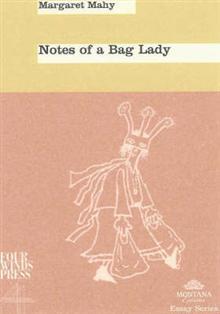Researching this plant was a fascinating study in the issues around pest plants here. I love this plant, but many hate it, and I couldn't blame them.
There are also a lot of misconceptions around the legalities to do with pest plants. ('Noxious weed' is no longer an officially used term here).
The ethics and rules around these plants are complex, and I'd especially like to thank Melanie Newfield at MAF for helping me negotiate my way through these!
About our wild jasmine
Jasmines are plants in the
Jasminum genus. Gardeners here grow several species of
jasmine which generally stay well contained. But one has become a pest plant and grows wild -
Jasminum polyanthum.
It looks a lot like one that is not a pest -
Jasminum azorica, or star
jasmine. It has a similar shape and size and climbs. But
Jasminum polyanthum has a distinctive pinkish colour to the buds and younger flowers. Sometimes it's called pink jasmine.
Because it hails from China it's also called Chinese
jasmine.
Friend or foe?
Jasminum polyanthum isn't a pest everywhere - in England the British Royal Horticultural society gave it their
Award of Garden Merit. It's very well behaved there.
In New Zealand and Australia it grows more profusely, takes over gardens, and escapes them. But even within this country it
behaves very differently from region to region. In some places it struggles to get a foothold in the wild. In others it runs rampant.
Round the north of the North Island and in Nelson it causes the biggest headaches. In these places the local authorities have included it in their Pest Plant Strategies.
However, in most parts of New Zealand it's actually not officially a Pest Plant - so there are no rules around it.
Lots of introduced plants behave differently in different parts of the country, and that's why strategically and legislatively so much focus is on managing these plants at a local authority level.
You can find out
which plants are on which Regional Pest Management Strategies here. Just scroll down and enter the species of plant you're looking for. (Or choose from the menu.)
There's also a National Pest Plant Accord that lists plants that are to be dealt with as pests throughout the entire country.
Jasminum polyanthum is not on the national list. You can see which plants are on it
here at Biosecurity NZ .
Dealing with Jasminum polyanthum
Often it spreads by people dumping their garden waste into a public area. It can grow from tiny bits of stem, and it sends out runners far and wide. It doesn't usually fruit, except occasionally in some warmer areas like Auckland. In that case birds may eat the berries and disperse it.
If it's part of a Pest Management Strategy in your area, you can't generally 'sell, propagate or distribute' it. In practice this means you can't do anything with it that would be likely to spread it.
If it's not part of a local Pest Management Strategy, but you still have concerns about it, ethically you may want to follow the same protocol as if it
was listed as a pest plant.
If you're gathering it in the wild you may also want to think, if I have the time do this - should I actually be spending that time on helping get rid of it?
Melanie Newfield talked a little to me about how pest management teams often prioritise their time - which may be relevant to how you treat
Jasminum polyanthum.
The teams are more likely to spend time on getting rid of pest plants from areas where they are just starting to show their faces, rather than work on trying to get rid of them from a place where they've already taken over and would be frustratingly time consuming, if not impossible to remove.
They take a stitch-in-time-saves-nine approach, and consider it the most efficient use of their time and resources.
Working with authorities
People sometimes fear that the council is going to come and demand they remove pest plants from their property, or fine them for having them - but in practice local authorities follow a more collaborative and educational approach.
They want everyone to work together on helping reduce the hold of pest plants, they don't want to come down heavy on people.
I'm told their whole approach these days is based on spreading information on pest plants and offering encouragement to people.
Their work also involves acknowledging that different people have different perspectives on particular plants, and they don't want to inflame what may already by a polarising issue.
Uses for jasmine
Jasmine in its various different species and varieties is a staple of the perfume industry, and you can make your own
jasmine tinctures at home for fragrance.
Jasmine is a strangely beguiling smell. Some are horrified to learn that one of its peculiar charms is that it shares a molecule in common with faeces -
indole.
That partly explains the love-it-or-hate-it thing that people have for the fragrance. (Other flowers contain indole too, but jasmine is especially noted for it.) Perfumery has always walked a fine line when it comes to animalic smells!
Jasmine flowers are edible - and an interesting addition to salads or used as garnishes.
You can also add them, dried or fresh, to green tea, to make your own mock
jasmine tea.
They dry well, so collecting them and drying them and keeping them in a jar for tea is very doable.
There are numerous recipes on the net for
jasmine tea infused vodka. I haven't tried it as a drink, but I'm sure you could do this with the straight flowers as well.
Above photo of Jasminum polyanthum courtesy of Wikipedia Commons.























